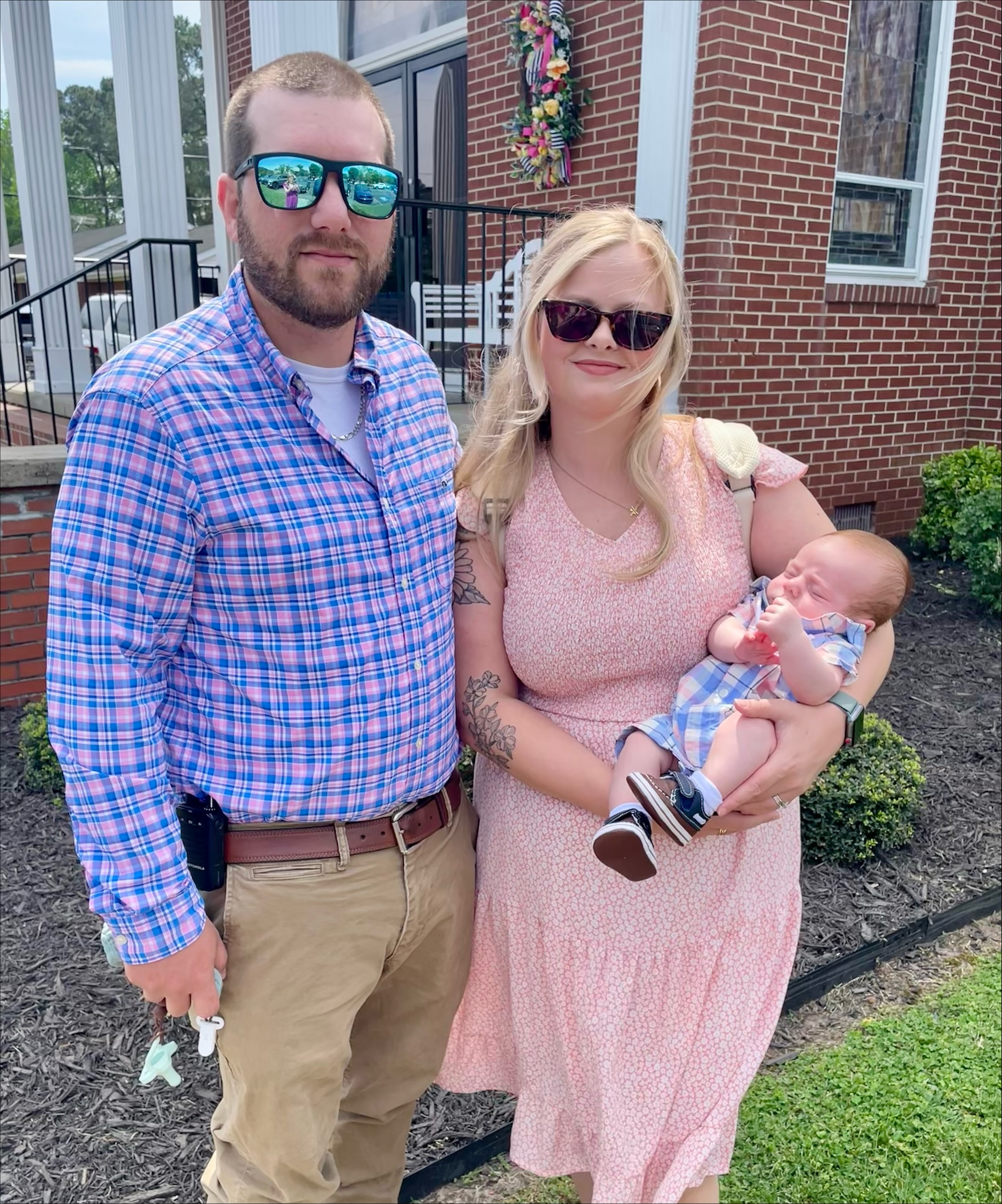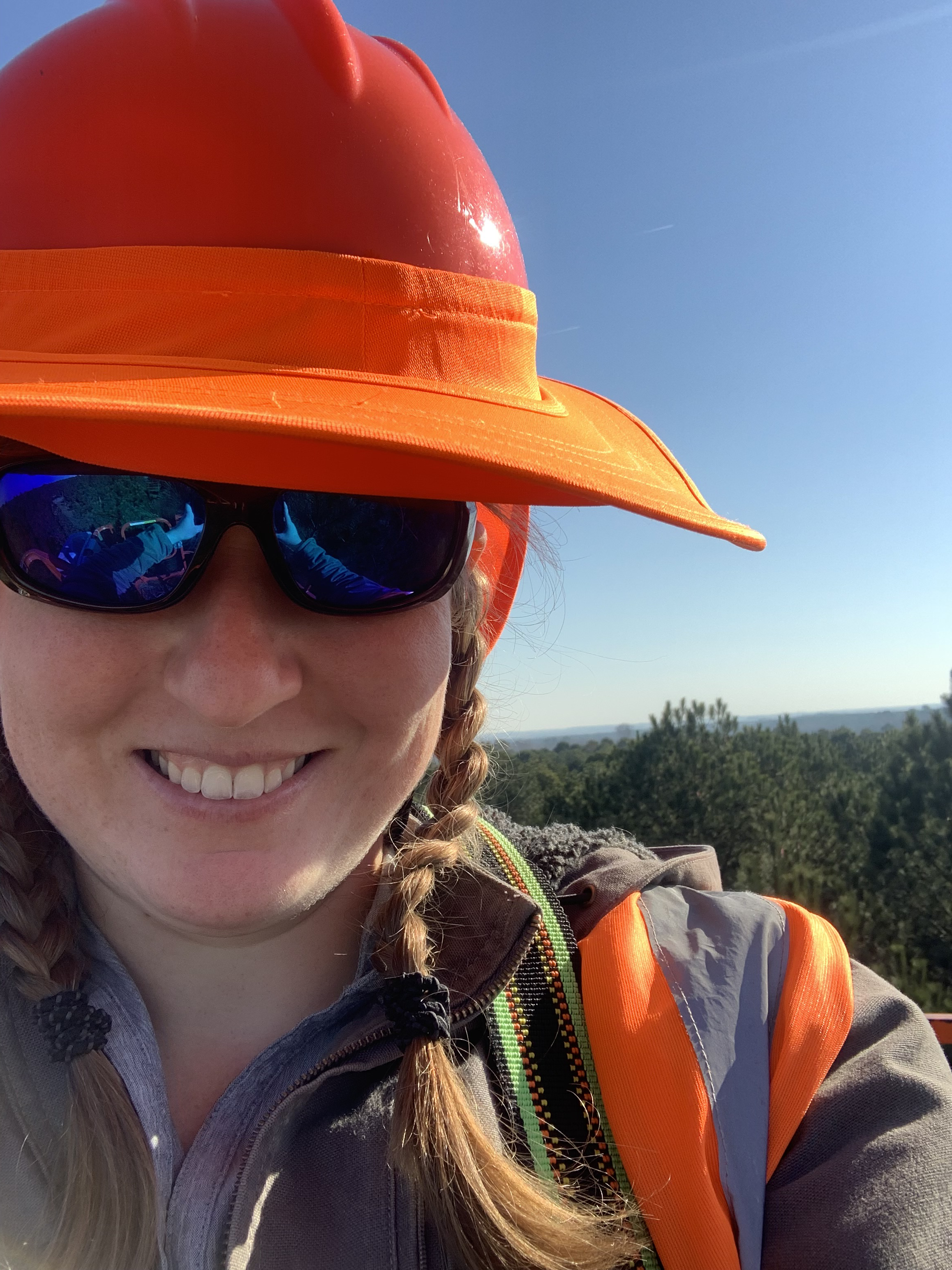
Cullen Utermark, right, and his father Jim take a break during a trip down Maine’s Saint John River this past spring.
For nearly as long as he can remember, Cullen Utermark has dreamed of pursuing a career in the outdoors. So, when he graduated from the State University of New York’s College of Environmental Science and Forestry five years ago and a friend told him about an opening in our Maine Timberlands, Cullen jumped on the opportunity.
“My friend had interned here and had a great experience,” Cullen says. “They’d already accepted a job elsewhere, so they encouraged me to apply.”
Cullen (right) and his girlfriend Gillian (left) show off some trout they caught on Weyerhaeuser land.
Cullen was hired into an entry-level position, where he was initially responsible for regeneration activities on post-harvest sites, including aerial spraying and fertilization. Since then, he’s moved between silvicultural and harvest management roles for our Timberlands in Vermont and Maine. He’s currently based in our Bingham, Maine, office.
“We’re a small and close-knit group, and everyone was so welcoming from the get-go,” he says. “Each of my teammates is happy to share what they know, so I’ve learned a lot over the past five years.”
Cullen and friends gather on Chamberlain Lake for some winter camping.
MEET CULLEN
Your title is forestry professional. Tell us what you do.
My role involves collaborating with two or three independent harvest contractors. My main objective is to ensure their productivity while adhering to state and federal rules and regulations, as well as our policies related to sustainable forestry and safety. I’ve handled most aspects that go into job site layout: choosing which trees to cut, which ones should remain as riparian buffers, and where to locate skid trails and roads.
Tell us what your day is like.
I visit crews in the woods two or three days a week to talk with the owners and equipment operators to understand what’s happening at our job sites. Part of my role involves scouting ahead of the harvest crews, so I’ll review a location on our upcoming schedule and check for areas that might need special handling. I also review sites post-harvest to ensure they’re ready for replanting. From time to time, I take on additional tasks such as road work and nuisance beaver trapping to remove beavers that build dams in places that flood our road systems.
Despite cold winter weather, Cullen, friends and colleagues were determined to find the legendary steam locomotives at Eagle Lake. From left: Cullen; Gillian; colleague Devin Fogarty, forestry professional; Dorie Fogarty; Cullen’s friend Leah; and colleague Stewart Hancock, forestry professional.
What led you to choose this kind of job?
I initially aspired to be a conservation officer. Then, in high school, I interned with a consultant forester who assisted small landowners with timber sales on their sites. This experience introduced me to other outdoor job options, and I decided to study forestry at the SUNY College of Environmental Science and Forestry. During my college summers, I did some arboriculture work, including climbing trees for a company in Pittsburgh. It was a great experience, but it convinced me that forestry was a better career option.
Cullen’s camp set up on the ice of Chamberlain Lake.
What’s your favorite part of the job?
I enjoy seeing immediate results, such as deciding to clear-cut a specific area while preserving another, or marking trails for feller bunchers through a harvest site. I also appreciate the outreach aspects of my job, such as being involved with the Maine chapter of the Society of American Foresters or participating in activities like organizing field tours for teachers and high school students. I have a drone pilot license, and I enjoy using them to showcase the tools and technologies used in forestry.
You must have some challenges. What are they?
The two biggest challenges in my job are the weather and the weather. It’s the same for every forester; conditions are always changing and forcing us to change our plans.
Seriously, though, time management can also be a challenge. I commute an average of an hour to each job site, so I try to be as efficient as possible about my routes since I also need to fit phone calls and meetings into my day.
Tell us something about your job that might surprise people.
Many people are surprised by the numerous technological tools in our operations, including drones, iPads and online mapping systems. They’ve become essential to our work and provide valuable information that helps us make more informed decisions. For example, we can use aerial drone images to identify water on skid trails and determine whether it’s necessary to revise our harvest plans, wait until things dry out, or intervene and mitigate the issue on the ground. In the past, we wouldn’t have known there was standing water until everyone arrived at the job site, so we weren’t able to plan ahead as well.
Cullen plants a hybrid chestnut on Weyerhaeuser timberlands in Mayfield, Maine.
What are your career aspirations? How do others learn about them?
I have regular conversations with my supervisor to discuss my career aspirations. Having an open dialogue and showing interest in other areas has really helped. I started in silviculture but later moved to planning forests in Vermont. After that, I returned to silviculture and eventually transitioned to harvesting. I’m fortunate to be able to explore different areas within my field and our entire New England ownership.
You’re a member of our APIC (Asian and Pacific Islander Community) employee resource group. Can you explain what that is and what it means to you?
I was adopted from South Korea when I was four months old and grew up in New York’s Hudson Valley with a loving but non-Korean family. APIC allows me meet others with Korean and Asian roots. Because I live and work in Maine, where the population isn’t quite so diverse, being part of a multicultural company like Weyerhaeuser and participating in APIC offers a sense of belonging and connection.
Cullen demonstrates drone capabilities for a summer intern (wearing the virtual-reality goggles).
Tell us about your other interests. What do you like to do when you’re not at work?
I love being outdoors — it’s a passion of mine no matter what I’m doing! I enjoy camping, fishing and riding snowmobiles when I’m not at work. I’m an avid ice fisher and spend many winter days out on the ice. I took a trip to Eagle Lake with friends and Weyerhaeuser colleagues, where we explored the woods and located some old steam railroad engines. They were in a remote area far from any existing railroads, so I’m very curious about how they got there!


